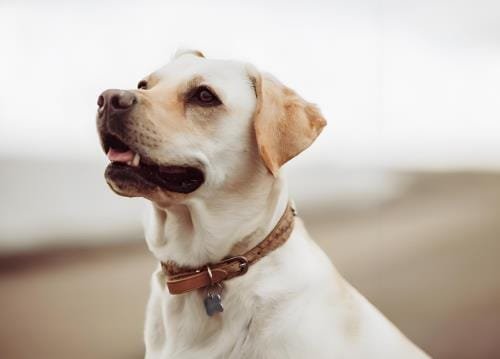
What to Do If You’ve Been Bitten by a Dog
so I need to figure out what steps someone should take if they get bitten by a dog. Let me start by recalling what I know. First, immediate first aid is probably important. I remember something about washing the wound with soap and water to prevent infection. But maybe there’s more to it. Then, controlling bleeding if it’s a deep bite. Applying pressure with a clean cloth?
Next, maybe they should seek medical attention, especially if the wound is serious. But how do you know when it’s serious? Signs like redness, swelling, pus could mean infection. Also, if the dog isn’t vaccinated against rabies, that’s a big concern. Rabies is deadly, so getting a post-exposure prophylaxis would be crucial.
Then there’s the part about documenting the incident. Getting the dog owner’s contact info and vaccination records. If it’s a stray dog, animal control might need to get involved. Reporting the bite to local authorities could be necessary.
Legal considerations might come into play too, like if the owner is liable. Taking photos of the injury and keeping records of medical treatment could help if there’s a need for legal action.

Preventing infection is important, so maybe antibiotics or a tetanus shot if needed. Emotional impact shouldn’t be ignored either, especially for children. Counseling might be needed if there’s trauma.
Long-term steps like following up on rabies shots if required. Also, preventing future bites by educating on how to approach dogs safely.
Wait, did I miss anything? Let me check. Oh, maybe the part about immobilizing the area if it’s a severe bite, but I’m not sure. Also, the risk of diseases other than rabies, like tetanus. So making sure tetanus vaccination is up to date.
Hmm, maybe the steps are: 1. Immediate first aid (wash, stop bleeding), 2. Assess severity and seek medical help, 3. Document and report, 4. Legal stuff, 5. Follow-up care, 6. Emotional support, 7. Prevention.
I should organize these points in order of priority. Also, clarify when to see a doctor—like puncture wounds, face or hand injuries, signs of infection, unknown dog’s rabies status.
I need to make sure the information is accurate. For example, rabies treatment is time-sensitive. If the dog can’t be observed for 10 days, then the person should get the rabies shots.
Also, maybe mention not to provoke the dog further, but since the bite already happened, that might not be necessary.
Putting it all together in a structured way with clear steps and explanations. Maybe number each step and provide details under each. Check for any missing points or inaccuracies.

If you or someone else has been bitten by a dog, taking prompt and appropriate action is crucial to minimize physical harm, prevent infection, and address potential legal or emotional concerns. Follow these steps:
1. Immediate First Aid
Clean the Wound:
Rinse the bite thoroughly with warm water and mild soap for at least 5 minutes to reduce infection risk.
Avoid harsh chemicals like hydrogen peroxide, which can damage tissue.
Control Bleeding:
Apply gentle pressure with a clean cloth or sterile bandage if the wound is bleeding.
Elevate the injured area if possible.
Cover the Wound:
Use a sterile bandage or dressing after cleaning. Avoid closing deep wounds with tape, as this can trap bacteria.
2. Assess Severity & Seek Medical Attention
Seek professional care if:
The bite is deep, gaping, or on the face, hands, feet, or near a joint.
Bleeding doesn’t stop after 15 minutes of pressure.
Signs of infection appear: redness, swelling, warmth, pus, or fever.
The victim has a weakened immune system, diabetes, or liver disease.
The dog’s rabies vaccination status is unknown, or the dog appears sick/aggressive.
Medical treatments may include:
Antibiotics to prevent/treat infection.
Tetanus booster if the last shot was over 5–10 years ago.
Stitches for deep wounds (may not be used immediately due to infection risk).
Rabies post-exposure prophylaxis (PEP) if rabies is suspected.
3. Document the Incident
Identify the Dog and Owner:
Obtain the owner’s contact information and the dog’s vaccination history (especially rabies).
If the dog is stray, note its description and location for animal control.
Report the Bite:
Contact local animal control or public health authorities to report the incident. This helps track rabies risks and prevent future bites.
Take Photos:
Document the injury and the scene for potential legal or insurance claims.
4. Legal Considerations
Consult a personal injury attorney if the bite resulted in significant harm, disfigurement, or if the owner is uncooperative.
Keep records of medical bills, lost wages, and other expenses related to the injury.
5. Monitor for Infection or Complications
Watch for signs of infection (red streaks, swelling, fever) for several days and seek care if they develop.
Complete any prescribed antibiotics.
6. Address Emotional Trauma
Dog bites can cause lasting fear or anxiety, especially in children. Consider counseling or therapy if needed.
7. Rabies Risk Management
If the dog’s rabies status is unknown:
The dog should be quarantined and observed for 10 days (per CDC guidelines).
If the dog cannot be observed, assume rabies exposure and begin PEP immediately.
8. Prevent Future Bites
Educate yourself and others (especially children) on safe interactions with dogs:
Avoid approaching unfamiliar dogs.
Never disturb a dog that’s eating, sleeping, or caring for puppies.
Recognize signs of stress in dogs (growling, stiff posture, raised fur).
When to Act Urgently
Rabies suspicion: Immediate PEP is critical, as rabies is nearly always fatal once symptoms appear.
Severe wounds: Emergency care may be needed for tissue damage or broken bones.
By following these steps, you can prioritize health, safety, and legal protection after a dog bite. Always err on the side of caution when seeking medical help.
American Dingo animal behavior Budget Tips canine behavior Canine Care Canine Health DIY pet projects dog behavior Dog Breeds dog care Dog Care Tips dog exercise Dog Food Dog Grooming dog health Dog Measurement dog nutrition dog ownership dog potty area Dog Training Dog Wound Care Family Pets Hunting Dogs lipomas in dogs newborn puppy care obedience training outdoor pet care Pet Care Pet Care Tips Pet Health Pet Loss Pet Safety pet tips pet training Positive Reinforcement Potty Training Puppy Care puppy health Puppy Training Rabies in Dogs Temperature Monitoring Training Tips veterinary advice Veterinary Care Veterinary Tips
-
 Daylight Saving Time & Dogs: Vet-Reviewed Effects on Canine Sleep, Behavior & Adjustment Tips
5 views
Daylight Saving Time & Dogs: Vet-Reviewed Effects on Canine Sleep, Behavior & Adjustment Tips
5 views -
 Dog Breeding Age Guide 2025: Optimal Timing for Females & Males (+ Vet-Approved Risks)
2 views
Dog Breeding Age Guide 2025: Optimal Timing for Females & Males (+ Vet-Approved Risks)
2 views -
 Dog Drug Testing: Vet-Approved Methods for Urine vs. Hair Tests & How to Ensure Accurate Results
2 views
Dog Drug Testing: Vet-Approved Methods for Urine vs. Hair Tests & How to Ensure Accurate Results
2 views -
 8 Common Puppy Illnesses Every Owner Should Know: Symptoms & Prevention Tips
2 views
8 Common Puppy Illnesses Every Owner Should Know: Symptoms & Prevention Tips
2 views -
 Effective Ways to Treat Giardia in Dogs
1 view
Effective Ways to Treat Giardia in Dogs
1 view -
 Caring for a Sensitive Dog: 11 Vet-Approved Strategies to Manage Anxiety & Build Trust (2025 Guide)
1 view
Caring for a Sensitive Dog: 11 Vet-Approved Strategies to Manage Anxiety & Build Trust (2025 Guide)
1 view -
 San Clemente Dog-Friendly Beaches: Top 10 Off-Leash Spots, Local Tips & Must-See Views (With Map)
1 view
San Clemente Dog-Friendly Beaches: Top 10 Off-Leash Spots, Local Tips & Must-See Views (With Map)
1 view -
 Dog Alopecia Guide: Vet-Backed Causes, Treatments & Prevention Tips (Breed-Specific Solutions)
1 view
Dog Alopecia Guide: Vet-Backed Causes, Treatments & Prevention Tips (Breed-Specific Solutions)
1 view -
 13 Must-Know 2025 Pet Hotel Stats: Market Boom, Profit Margins & Future Trends Revealed
1 view
13 Must-Know 2025 Pet Hotel Stats: Market Boom, Profit Margins & Future Trends Revealed
1 view -
 12 Must-Know 2025 Australia Pet Insurance Stats: Cost Shocks, Gen Z Trends & Vet Bill Survival Guide
1 view
12 Must-Know 2025 Australia Pet Insurance Stats: Cost Shocks, Gen Z Trends & Vet Bill Survival Guide
1 view










Leave a Reply
You must be logged in to post a comment.